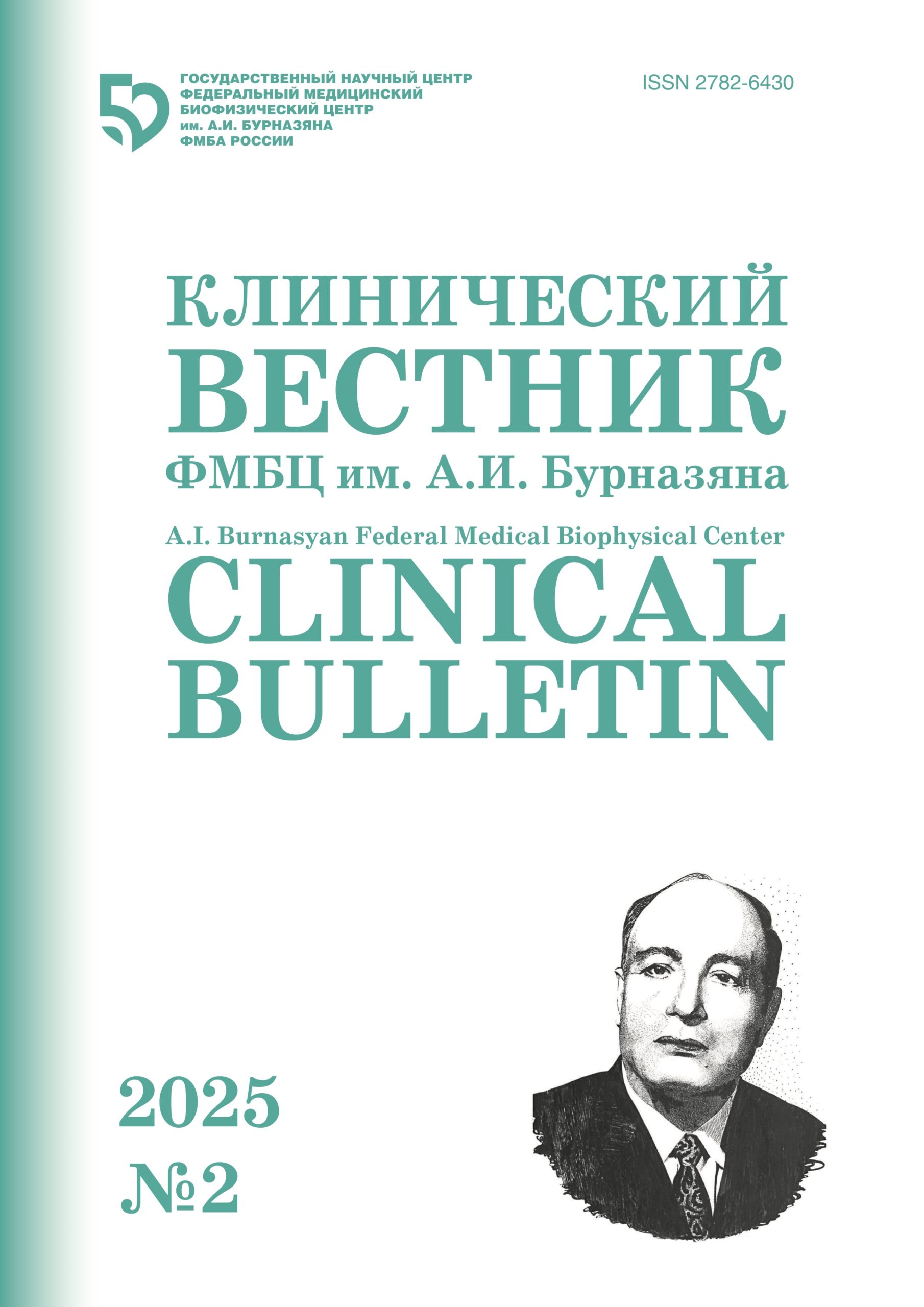A.I. Burnasyan FMBC clinical bulletin. 2022 № 3
E.V. Lipova, Yu.G. Vitvitskaya, A.S. Chekmarev, I.I. Glazko, A.A. Sokolskaya, T.A. Silyutina
The Method of Cryodestruction of Bening Neoplasms of the Skin and Mucosa
in Dermatovenerology and Cosmetology (Literature Review)
A.I. Burnasyan Federal Medical Biophysical Center, Moscow, Russia
Contact person: Sokolskaya Anna Alesandrovna: anya_sokolskaya@mail.ru
Abstract
The urgency of the problem of neoplasms has been high over the past decades. According to Russian researchers, when treating patients with neoplasms, epithelial and benign formations prevail. Today, in the doctor’s arsenal there is a wide range of therapeutic techniques, including various methods of destruction, including cryosurgery.
Cryosurgery is a minimally invasive method of removing skin neoplasms, which is effectively used in the practice of a dermatovenereologist and cosmetologist to remove warts, treat molluscum contagiosum, seborrheic keratosis, etc.
This method is based on the impact of ultra-low temperatures on the skin, the source of which is liquefied gases, resulting in tissue destruction.
This procedure is an effective alternative to invasive methods and can be performed quickly and cost-effectively on an outpatient basis.
The main advantages of using cryosurgery include ease of implementation, a relatively small number of contraindications and a good cosmetic result. Absolute contraindications for this method include neoplasms of unspecified etiology, some of the malignant neoplasms, patient disagreement with possible changes in pigmentation, obvious sensitivity or adverse reaction to cryosurgery.
There are various techniques for carrying out the procedure, which include simple methods of applying liquid nitrogen, such as using a cotton swab, which is immersed in a Dewar vessel and then loosely pressed against the neoplasm, and more technologically advanced – the use of cryosurgical devices that work with liquid nitrogen.
Keywords: cryosurgery, cryodestruction, liquid nitrogen, neoplasms, dermatology
For citation: Lipova EV, Vitvitskaya YuG, Chekmarev AS, Glazko II, Sokolskaya AA, Silyutina TA. The Method of Cryodestruction of Bening Neoplasms of the Skin and Mucosa in Dermatovenerology and Cosmetology (Literature Review) Burnasyan Federal Medical Biophysical Center Clinical Bulletin. 2022.3:48-53. (In Russian) DOI: 10.33266/2782-6430-2022-3-48-52
REFERENCES
1. Sostoyaniye Onkologicheskoy Pomoshchi Naseleniyu Rossii v 2019 Godu = The State of Oncological Care for the Population of Russia in 2019. Ed. Kaprin A.D., Starinskiy V.V., Shakhzadova A.O. Moscow Publ., 2020. 239 p. (In Russ.).
2. Kapustina O.G. Diagnostika i Optimizatsiya Lecheniya Novoobrazovaniy Kozhi v Ambulatornoy Praktike Dermatologa = Diagnosis and Optimization of Treatment of Skin Neoplasms in the Outpatient Practice of a dermatologist. Diss. Candidate’s thesis in Medicine. Moscow Publ., 2009. 163 p. (In Russ.).
3. Awad S.M., El-Badawy O., Abou-Taleb D.A.E. Efficacy of Intralesional Cryosurgery in the Treatment of Multiple Extragenital Cutaneous Warts: A Randomized Controlled Study. Dermatol. Surg. 2020;46;8:e8-e15. doi: 10.1097/DSS.0000000000002217.
4. Federalnyye Klinicheskiye Rekomendatsii. Dermatovenerologiya 2015: Bolezni Kozhi. Infektsii, Peredavayemyye Polovym Putem = Federal Clinical Guidelines. Dermatovenereology 2015: Skin Diseases. Sexually Transmitted Infections. Moscow, Delovoy Ekspress Publ., 2016. 768 p. (In Russ.).
5. Clebak K.T., Mendez-Miller M., Croad J. Cutaneous Cryosurgery for Common Skin Conditions. Am. Fam. Physician. 2020;101;7:399-406.
6. Prohaska J., Jan A.H. Cryotherapy. 2021. StatPearls. [URL]: Treasure Island (FL): StatPearls Publishing. 2022.
7. Zimmerman E.E., Crawford P. Cutaneous Cryosurgery. Am. Fam. Physician. 2012;86;12:1118-1124.
8. Andrews M.D. Cryosurgery for Common Skin Conditions. Am. Fam. Physician. 2004;69;10:2365-2372.
9. Dawber R.P. Cryosurgery: Complications and Contraindications. Clinical Dermatology. 1990;8:108-114.
10. Colver G. Cryosurgery in Podiatric Practice. PodiatryNowSupplement. 2005:1-5.
11. Goldberg L.H., Kaplan B., Vergilis-Kalner I., Landau J. Liquid Nitrogen: Temperature Control in the Treatment of Actinic Keratosis. Dermatol. Surg. 2010;36;12:1956-1961. 11.1. Kuflik E.G. Cryosurgery for Skin Cancer: 30-Year Experience and Cure Rates. Dermatol Surg. 2004;30;2.Pt 2:297-300.
12. Lipova Ye.V., CHekmarev A.S., Vitvitskaya Yu.G., Glazko I.I., Novoseltsev M.V., Silyutina T.A. Metody Destruktsii Dobrokachestvennykh
Novoobrazovaniy Kozhi v Dermatologicheskoy Praktike= Methods of Destruction of Benign Skin Neoplasms in Dermatological Practice. Moscow Publ., 2022. 52 p. (In Russ.).
Conflict of interest. The authors declare no conflict of interest.
Financing. The study had no sponsorship.
Contribution. Article was prepared with equal participation of the authors.
Article received: 01.08.2022. Accepted for publication: 28.08.2022.


